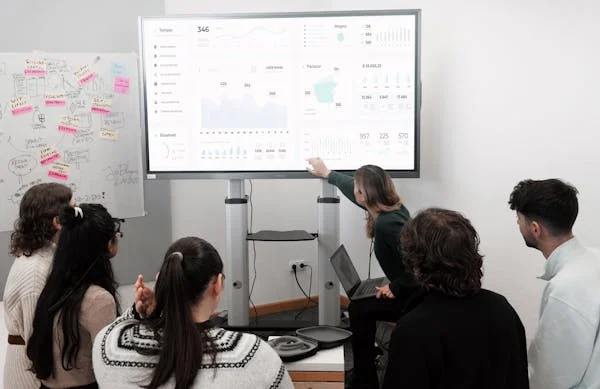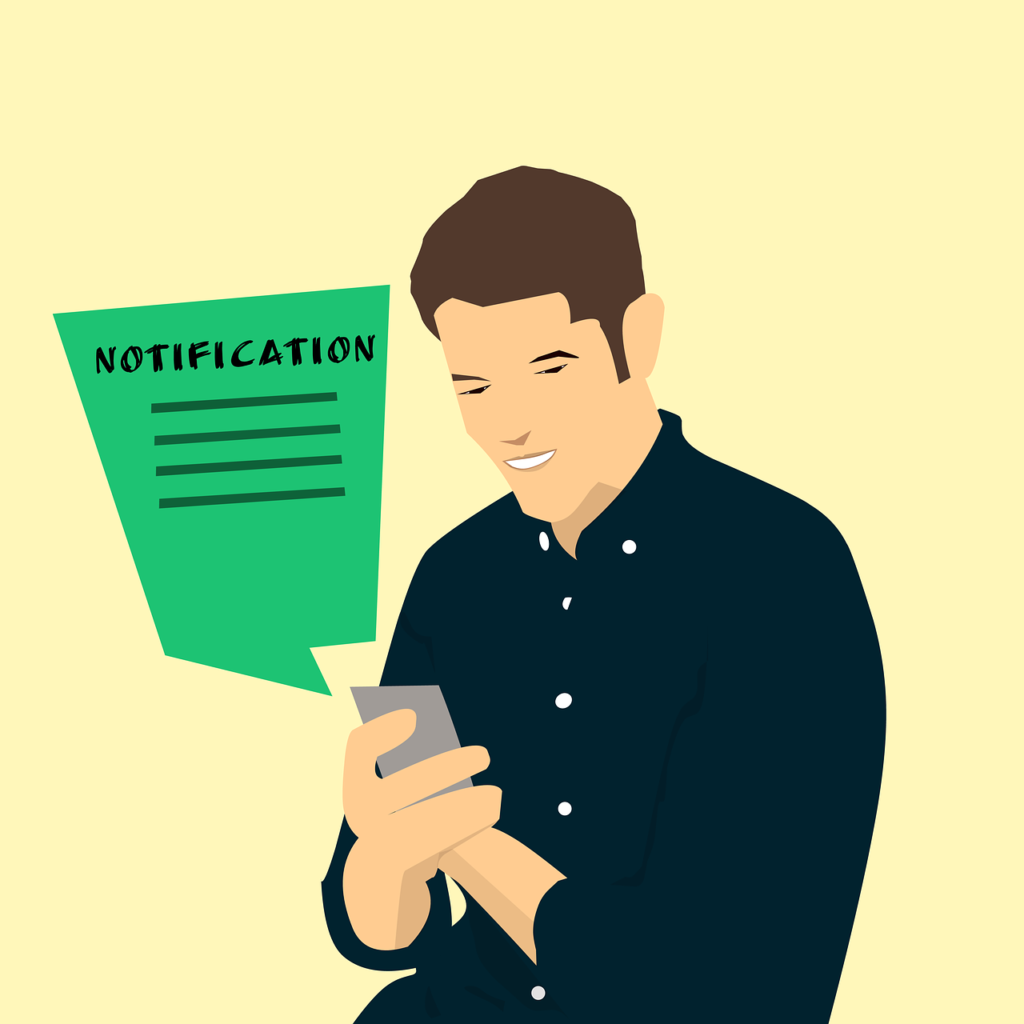Have you ever wondered why some brands seem to nail it every time? Their customers feel like they’re understood, their journey feels effortless, and they keep coming back for more. It’s not magic; it’s strategy. In the world of B2C, crafting a high-converting customer journey is the secret sauce to success.
Understanding the Customer Journey
The Foundation of Conversion

To create a customer journey that truly converts, you must look beyond the surface. The journey is more than just steps; it’s a fluid, interconnected experience influenced by emotions, expectations, and decision-making triggers.
For startup founders, understanding this dynamic is critical because every interaction with your brand either builds trust or creates friction. A deep, strategic dive into the customer journey can help you create an experience that not only converts but also inspires loyalty.
One of the most crucial starting points is to map out the psychological triggers at each stage of the journey. At the awareness stage, your customer is likely motivated by curiosity or a problem they’ve just identified. In the consideration stage, they are weighing options and need reassurance.
At the purchase stage, they are looking for confidence that they are making the right decision. After purchase, emotions such as satisfaction or regret will dominate, and your goal is to nurture the former and mitigate the latter.
To strategize effectively, immerse yourself in the mindset of your customer. Conduct empathy interviews to uncover what they truly care about, what frustrates them, and what excites them. Use these insights to create touchpoints that resonate.
For example, if your audience values speed and efficiency, streamline your website navigation, highlight fast shipping options, and offer quick customer support. If they’re more concerned about quality, emphasize durability and craftsmanship in your messaging.
Journey mapping is not a one-size-fits-all exercise. Segment your audience based on demographics, behaviors, and psychographics to uncover different journeys within your target market. For startups, where resources are often limited, focus first on your most lucrative customer segments. These are the people who are most likely to convert and become loyal customers. Tailor their journey to feel personal, seamless, and rewarding.
A critical strategic action for founders is to identify the gaps between customer expectations and the actual experience. Do a complete audit of every touchpoint. From social media ads to the checkout page, ask yourself if each interaction aligns with what your customer wants and needs at that specific stage. If there’s a mismatch, it’s an opportunity to refine.
Invest in storytelling to strengthen the emotional pull of your customer journey. Customers connect with narratives, not just products. Showcase how your product solves real problems or improves lives. Share stories of other customers who have achieved success with your product.
As a startup, your brand story is particularly important. Let your audience see your vision, your mission, and your commitment. When customers feel like they’re part of your journey, they’re more likely to stick with you.
Leverage technology to create a smoother journey. Startups can use tools like customer relationship management (CRM) software, behavioral analytics platforms, and heatmaps to better understand how users engage with their brand. This data can pinpoint where users drop off, where they spend the most time, and what draws their attention. Use this insight to optimize your website, email campaigns, and ad targeting.
For startups, nurturing a feedback loop is another cornerstone of a strong customer journey strategy. Implement ways to gather feedback at every stage, whether it’s through post-purchase surveys, customer service calls, or social media comments. When customers feel heard, it builds trust. More importantly, their input can reveal hidden friction points in the journey that might otherwise go unnoticed.
Experimentation is key. Since your startup is likely evolving rapidly, your customer journey will need to evolve too. Test different approaches to see what works best. For instance, A/B test your landing pages, email campaigns, and call-to-action buttons. Continuously iterate based on performance metrics. If one approach doesn’t work, pivot quickly and try another.
Finally, understand that your customer journey is part of a larger ecosystem. Collaborate with other startups, influencers, or complementary brands to create a more holistic experience. For example, if you sell fitness products, partnering with a wellness app or a healthy food delivery service could enhance the value you provide. This interconnected approach not only strengthens the customer journey but also helps you expand your reach.
Designing for the Awareness Stage
Catching Their Attention

The awareness stage is the critical first touchpoint where potential customers come to know your brand exists. For startup founders, this stage is both an opportunity and a challenge. Your brand doesn’t yet have the weight of reputation or recognition, so the strategies you employ must be designed to build curiosity and trust while making a strong, memorable impression. The goal here isn’t just to grab attention—it’s to ensure that attention is meaningful and leads to further engagement.
Start by understanding your audience’s natural discovery patterns. Where do they hang out online? What do they read, watch, or listen to? If your target audience spends time on Instagram, you need to focus on creating visually striking, scroll-stopping content that aligns with their interests.
If they rely on search engines for solutions, a robust SEO strategy is crucial to ensure your content ranks where they’re looking. For startups, understanding these behaviors allows you to allocate your resources effectively, focusing on the channels that deliver the most impact.
Content marketing is one of the most potent tools in the awareness stage, but it must be strategic. Aim to create content that sparks curiosity while providing immediate value. Educational or entertaining content works particularly well here because it gives your audience a reason to engage without demanding a commitment.
For example, a startup selling eco-friendly clothing could create a blog series or videos on sustainable fashion trends, positioning itself as a thought leader while subtly introducing its products. Ensure that your content naturally ties back to your brand’s values and messaging to create a coherent narrative.
Collaborations and partnerships can amplify your reach during the awareness stage. Partner with influencers or micro-influencers who align with your brand values and have an audience that matches your target demographic.
Their endorsement can lend credibility to your brand and help you connect with potential customers in a more personal and relatable way. Look for creative ways to collaborate, such as co-hosting events, webinars, or giveaways, which can generate excitement and visibility.
Social media advertising can be particularly effective, but startups need to be strategic about how they use it. Instead of focusing solely on conversions, create ad campaigns designed to introduce your brand and start a conversation.
Use storytelling techniques in your ads to build emotional connections. For example, a skincare startup might create an ad that follows the journey of a customer struggling with sensitive skin and how they found confidence through your product. Story-driven ads make your brand more relatable and memorable.
Interactive experiences are another highly effective way to capture attention. For instance, consider creating a quiz, a survey, or an interactive tool that provides value while subtly promoting your product.
A fitness app startup could develop a quiz titled “What’s Your Ideal Workout Routine?” that ends with a recommendation for their app. These tools not only engage your audience but also provide insights into their preferences and behavior, which you can use to refine your strategies.
Startup founders should also prioritize establishing an emotional connection early. People are drawn to brands that resonate with their values or aspirations. Share your brand’s story in a way that highlights your mission and the problem you’re solving.
If you’re a sustainable food startup, let people know why you’re passionate about reducing food waste and how your product contributes to that cause. Authenticity is key—your audience should feel like they’re connecting with real people behind the brand.
Creating a buzz around your brand can further amplify awareness. Launch campaigns with a clear hook, such as a limited-time event, a challenge, or an exclusive pre-launch offer. A startup debuting a new fitness product might kick off with a social media challenge encouraging participants to share their fitness goals for a chance to win a free trial. This not only builds excitement but also creates user-generated content that further spreads the word about your brand.
Finally, focus on retargeting those who show initial interest but don’t immediately engage further. Awareness doesn’t always lead to immediate action, but it plants a seed. Use retargeting ads to re-engage visitors who’ve interacted with your content or visited your website.
These ads should gently nudge them down the funnel, providing additional information or showcasing testimonials that reinforce your brand’s value.
Turning Interest into Consideration
Building a Connection

The consideration stage is where curiosity transforms into genuine interest. At this point, your audience is intrigued but not yet committed. They’re exploring their options, weighing the benefits, and searching for the right fit.
For startup founders, this stage is a golden opportunity to build trust, establish authority, and provide the clarity needed for customers to take the next step. This isn’t about rushing them to a decision—it’s about guiding them thoughtfully while positioning your brand as the obvious choice.
The foundation of success in the consideration stage lies in offering tailored solutions that align with your audience’s specific needs. This is where personalization becomes essential. Use data gathered from previous interactions, such as the pages they’ve visited or products they’ve explored, to create a bespoke experience.
For instance, if a potential customer has been browsing eco-friendly home products on your website, send them an email highlighting your most popular sustainable items, paired with tips on reducing household waste. The more relevant and specific your content, the more likely they are to engage further.
Building trust is paramount during this stage. As a startup, you may not yet have an established reputation, so you need to actively prove your credibility. Case studies, testimonials, and user-generated content can be incredibly powerful here. Showcase real stories of how your product has made a difference for others.
If you’re a fitness startup, for example, share before-and-after photos from customers who’ve achieved results using your product, along with their authentic feedback. Ensure that these stories are relatable and reflect the diversity of your audience, so potential customers can see themselves in your success stories.
Educational content also plays a significant role in the consideration phase. People often hesitate because they don’t fully understand how your product solves their problem or whether it’s right for them. Create guides, videos, or blog posts that address their common questions and concerns.
For instance, a tech startup offering project management software might develop a detailed video tutorial showing how their platform simplifies collaboration and boosts productivity. This type of content not only answers questions but also demonstrates your expertise and commitment to helping your audience succeed.
Interactive engagement is a powerful way to deepen connections during consideration. Tools like live webinars, Q&A sessions, or interactive demos allow potential customers to experience your product or service firsthand while addressing any lingering doubts in real-time.
For example, a SaaS startup might host a live demo where participants can ask questions about the software’s features and see it in action. These experiences create a two-way dialogue that builds trust and makes your brand feel approachable.
Transparency is another cornerstone of moving customers through the consideration stage. Be upfront about your pricing, policies, and value proposition. Hidden costs or vague details can create unnecessary friction and erode trust. For startups, a detailed FAQ page or an open conversation with your audience can go a long way. If your product is premium-priced, clearly articulate the value behind the cost, highlighting the quality, benefits, and unique features that justify the investment.

Social proof should extend beyond reviews and testimonials. Create an environment where potential customers see others engaging with your brand. This could be through showcasing real-time purchase notifications on your site, highlighting user comments on social media, or featuring a gallery of customer-submitted photos. When your audience sees a community forming around your brand, it reassures them that they’re making a safe and popular choice.
Leverage email marketing as a nurturing tool rather than a hard sell. Instead of bombarding your audience with direct sales pitches, craft a sequence of emails that educates, inspires, and gently nudges them closer to a decision.
For instance, your first email might share a helpful blog post related to their interest. The next could introduce your most-loved product with a special offer, followed by a customer success story or a reminder about the benefits of your solution.
The key to this stage is consistency in communication. Prospective customers need to feel like you’re available and engaged without being overly aggressive. This balance requires a mix of automation and personalization.
Use tools that allow you to automate follow-ups while still maintaining a human touch. For example, if a customer leaves items in their cart, a well-timed email can remind them of the benefits of those items and include a discount code to encourage completion.
Startup founders should also focus on removing friction at this stage. Make it easy for potential customers to find the information they need. If your website’s navigation is clunky or your product pages lack detail, you risk losing their interest. Ensure your site is intuitive, your content is easy to digest, and your calls-to-action are clear and enticing. Simplicity and clarity at this stage make all the difference.
Finally, never underestimate the power of offering something extra to incentivize further engagement. Free trials, downloadable resources, or exclusive previews can push hesitant customers closer to commitment. For example, a subscription box startup might offer a first-month discount or a peek inside their curated collections to spark excitement. These small but thoughtful gestures can tip the scales in your favor.
Guiding Them to Purchase
Making the Decision Easy

The purchase stage is the pivotal moment in the customer journey. At this point, all the effort you’ve put into capturing attention and building trust culminates in a single action: the decision to buy. For startup founders, this is where the stakes are highest.
A seamless, reassuring, and confident buying experience can be the difference between winning a customer or losing them to hesitation. The key to success lies in eliminating doubts, simplifying the process, and reinforcing the value of your product.
Start by addressing the psychology of decision-making. Most customers experience a mix of excitement and uncertainty when they’re about to make a purchase. To tip the scale toward action, you need to preemptively address their concerns.
Showcase clear, concise information about your product’s benefits, but also highlight what happens after the purchase. Communicate your return policies, satisfaction guarantees, or customer support availability prominently. Knowing that there’s a safety net in place reduces the perceived risk of making the wrong choice.
Streamlining the checkout process is one of the most impactful actions you can take. Friction in the final stages is a leading cause of abandoned carts, so simplicity is paramount. For startups, this means minimizing the steps needed to complete a purchase.
Allow guest checkouts for new customers who aren’t ready to create an account yet. Integrate autofill options for payment and shipping information. Ensure your checkout page loads quickly and functions flawlessly on both desktop and mobile devices. Every second of delay or complexity adds a potential drop-off point.
Transparency in pricing is critical at this stage. Customers often abandon purchases when unexpected costs appear, such as hidden fees or inflated shipping charges. Be upfront about all costs from the start. If you can, offer free shipping or bundle it into the product price to simplify the decision. If shipping costs are unavoidable, provide clear options and explain their value, such as faster delivery times or premium packaging.
Social proof plays a vital role in the final moments of the decision-making process. At the purchase stage, customers are looking for validation that they’re making the right choice. Place customer reviews, testimonials, or trust badges directly on your product and checkout pages.
For example, if you’re a beauty startup, showing a quick quote like “Loved by 98% of our customers!” near the “Buy Now” button reinforces confidence. Trust badges for secure payment, money-back guarantees, or eco-friendly practices also add credibility.
Scarcity and urgency are powerful motivators, but they must be used authentically. Highlighting limited availability or time-sensitive offers can push hesitant buyers to act. For instance, a startup selling seasonal products might emphasize that an item is in limited stock or part of a special holiday collection. However, ensure that these messages align with reality to maintain trust. Artificial urgency can backfire and damage your reputation.
Leverage personalized nudges at this stage to remind customers why they’re buying. Use data from their browsing history to recommend complementary products or offer bundles that enhance their purchase. If someone is buying a camera, for example, suggesting a bundle with accessories like memory cards and cases not only increases the order value but also makes the decision easier by providing a ready-made solution.
Payment flexibility is another critical factor in removing barriers to purchase. Offer a variety of payment methods, including credit cards, digital wallets, and buy-now-pay-later options. For startups, integrating these options may require investment, but it broadens your appeal to a wider audience. If your product has a higher price point, consider offering installment plans. Customers are more likely to commit when the financial burden feels manageable.
Another often-overlooked strategy is reinforcing the value proposition even at the final stages. On the checkout page, subtly remind customers why your product is worth it. Include quick, digestible snippets about the product’s unique benefits, such as “Made from 100% organic materials” or “Join 10,000 happy customers who love this product!” These reminders keep enthusiasm high and reassure customers of the value they’re receiving.
Post-purchase reassurances can also play a role before the transaction is complete. Let customers know what they can expect immediately after purchasing. Will they receive an instant confirmation email? How soon will their product ship? When will they receive tracking details? Clear communication about these next steps builds trust and reduces anxiety.
A personal touch can further enhance the buying experience. If your startup has the capacity, consider adding small but thoughtful gestures like handwritten thank-you notes, personalized follow-up emails, or small free samples with orders. These actions don’t just close the sale—they lay the groundwork for a loyal customer relationship.

Conclusion
The journey from awareness to purchase is both an art and a science, and for startup founders, mastering this process can be transformative. Crafting high-converting B2C customer journeys isn’t just about pushing products; it’s about creating a meaningful, seamless experience that resonates with your audience.
Every touchpoint, from the moment they discover your brand to the post-purchase connection, should reflect your commitment to their needs, values, and aspirations.




















